Learning and Development
Be Curious: Unlock the Door to Lifelong Learning
Curiosity isn’t just a trait—it’s your superpower.
It illuminates the boundless cosmos of wisdom.
It propels breakthroughs, nurtures progress, and kindles an unstoppable fervor.
With inquisitive eyes, the ordinary transforms into the extraordinary.
Dare to ask questions, seek answers, and never stop exploring.
Curiosity paves the path to your fullest potential.
“Curiosity isn’t just a trait; it’s a lifestyle. Embrace it, and watch your world expand.” – Mike Brewer
“To be curious is to embrace life’s infinite mysteries and possibilities.” – Anonymous
Share this:
Steph Curry’s Interleaving Mastery: A Playbook for Continuous Learning in Multifamily Leadership

Photo by Markus Spiske on Unsplash
In basketball, Stephen Curry stands as an example of excellence, a testament to the power of skill, strategy, and continuous improvement. His mastery isn’t merely a product of relentless practice but a specific technique known as “interleaving.” This method, often overlooked, holds transformative potential for leaders in the multifamily space, offering a blueprint for enhancing professional skills, strategies, and, ultimately, success.
Interleaving, in its essence, is a learning method where instead of repetitively practicing the same skill, one mixes different skills together. This approach challenges the brain to adapt and apply skills in varied contexts, enhancing learning and retention. Curry’s training regime exemplifies this; he doesn’t shoot three-pointers endlessly. Instead, he interweaves different types of shots, dribbling, and movements, creating a rich, unpredictable practice environment that sharpens his adaptability and decision-making on the court.
For multifamily leaders, interleaving can revolutionize the way skills and knowledge are developed. Rich with variables ranging from operational management to client relations and technological innovation, the multifamily industry demands a multifaceted skill set. Leaders can foster a more robust, adaptable, and innovative mindset by adopting an interleaving approach to professional development.
Imagine a training program where instead of focusing solely on one aspect, like financial management, a leader simultaneously engages with marketing strategies, customer service excellence, and technological adeptness. This approach breaks the monotony of traditional learning and simulates real-world scenarios where multiple skills must be employed concurrently. Such an approach encourages a deeper understanding of how different facets of the business interconnect, leading to more strategic decision-making and problem-solving.
Interleaving also promotes creativity and innovation. Being able to think outside the box is crucial in multifamily. When leaders are exposed to diverse learning experiences, they’re more likely to connect disparate ideas and develop novel solutions to challenges. This mirrors how Curry, through varied practice, finds creative ways to navigate on the court and score in seemingly impossible situations.
Furthermore, interleaving aligns perfectly with the nature of today’s digital, fast-paced world. PropTech and digital marketing strategies increasingly influence the multifamily industry. Leaders who interleave these trends with traditional business practices are better positioned to stay ahead of the curve, leveraging technology for enhanced efficiency, customer satisfaction, and business growth.
Share this:
Empowering Multifamily Leaders: Lessons from Florence Scovel’s Wisdom on Building Self-Confidence

Photo by sydney Rae on Unsplash
Navigating the intricate dynamics of interpersonal relationships and self-development is pivotal in business. The adage from Florence Scovel‘s work, “No man is your enemy, no man is your friend, every man is your teacher,” offers profound insight for leaders striving to build a resilient personal brand.
The Multifaceted Role of Adversity and Collaboration in Personal Growth
Leaders in the multifamily space encounter a plethora of personalities and situations. From challenging interactions with clients to collaborations with innovative thinkers, each encounter presents an opportunity for learning and growth. Scovel’s saying encourages leaders to view every interaction as a learning opportunity, transforming potential adversaries into inadvertent mentors and allies into sources of fresh perspectives.
Research in leadership development emphasizes the value of diverse experiences in cultivating self-confidence and resilience. A Center for Creative Leadership study highlights that challenging work experiences contribute significantly to developing practical leadership skills. By adopting Scovel’s mindset, leaders can reframe challenges as stepping stones to greater self-confidence and efficacy.
Embracing a Teacher in Every Interaction: Building a Learning-centric Leadership Style
Adopting a learning-centric approach in leadership, where every individual is seen as a teacher, fosters an environment of continuous improvement and innovation. This perspective aligns with the emerging trends in the multifamily industry, where adaptability and learning agility are increasingly recognized as key leadership competencies. A report by Deloitte on 2021 Global Human Capital Trends underscores the importance of fostering a culture of continuous learning for organizational agility and resilience.
Incorporating this wisdom into personal branding involves showcasing a commitment to lifelong learning and openness to diverse viewpoints. Leaders who exemplify this trait often stand out in the multifamily sector, attracting like-minded professionals and opportunities for collaborative growth.
The Role of Empathy and Emotional Intelligence in Leadership
Scovel’s adage also speaks to the importance of empathy and emotional intelligence in leadership. Understanding and appreciating the diverse experiences and viewpoints of others not only enriches one’s perspective but also strengthens relationships within the multifamily community. The Harvard Business Review outlines the significance of emotional intelligence in leadership, citing its impact on team performance and organizational success.
Leaders who embody this principle in their brand can navigate complex interpersonal dynamics effectively, fostering a positive and productive work environment.
Practical Steps for Integrating Scovel’s Wisdom into Personal Branding
- Reflective Practice: Regularly reflect on interactions and extract learning points, regardless of the nature of the experience.
- Seek Diverse Perspectives: Actively engage with individuals from various backgrounds and expertise within the multifamily industry.
- Promote a Culture of Learning: Encourage a learning-centric approach within your team or organization, emphasizing the value of every experience as a learning opportunity.
- Showcase Learning Agility: Highlight your adaptability and commitment to continuous learning in your branding efforts, such as social media profiles and professional networking platforms.
Share this:
Virginia Love | Collective Conversations
Release Date: 08.08.2023
In this episode, Mike Brewer sits down with Virginia Love – Industry Principle at Entrata. Virginia is a highly respected expert in the multifamily industry with a long history in multifamily leasing, marketing, and operations. She is a champion of the people in our industry and has a deep understanding of the ways that technology impacts the front-line teams and believes that it is our responsibility to elevate the role our team members play in the success of our industry.
Key Discussion Points:
- Lasting impact of the pandemic: The pandemic shed attention on the importance of the site teams and led to the current focus on them as the drivers of performance and doing what is right for the site teams, recognizing the need to reconsider appropriate wage levels. The pandemic accelerated the pace and adoption of technology and forced companies that were sitting on the sidelines to engage with virtual tours, self-guided tours, and more.
- Culture Matters: Entrata is a technology company that actively engages its customers in the Entrata culture – so much so that they become invested in the Entrata brand.
- Economic Inclusion: For decades, the only impact for residents who paid their rent on time was not incurring late fees and being sent to collections. Entrata offers a program that reports resident payment history to the major consumer credit reporting agencies. Giving renters the ability to build their credit by simply paying their rent is a significant economic empowerment tool.
- The Value of Yes – Advice if you desire to grow your multifamily career: Get involved. Make Yourself Indispensable. Do whatever other people don’t want to. Get active in your Apartment Association, IREM, or NMHC. Take every opportunity to learn and don’t wait for someone to teach you. There are countless ways to build your knowledge so take charge of your education and growth.
In between the non-stop camaraderie and laughter, Mike and Virginia share practical tips and advice based on their extensive knowledge and expertise in the multifamily industry.
Whether you’re a seasoned investor, property manager, vendor/supplier, or someone interested in learning more about the multifamily market, this series offers valuable insights that can help you navigate the challenges and seize the opportunities in this dynamic industry.
About Mike Brewer
Mike Brewer is enthusiastic about people, technology, and the world of multifamily. He serves as President of RADCO Residential and COO of The RADCO Companies. As the Founder of Multifamily Collective, Mike draws on his deep understanding of the multifamily space and is passionate about sharing insights and wisdom through a series of Collective Conversations with others in this industry. This podcast creates a platform for industry professionals to connect, learn, and grow together.
About Virginia Love
Virginia Love, Industry Principal at Entrata is directly involved with marketing, product and sales as a liaison from the multifamily industry to these departments. Before joining Entrata, she held prominent leadership roles for apartment owners and operators such as Trammell Crow and ING Clarion. Immediately prior to coming to Entrata, she was Vice President of Leasing and Marketing for Waterton Residential. With nearly three decades of industry experience, Virginia has served on numerous multifamily committees and boards for industry organizations including the Atlanta Apartment Association, Georgia Apartment Association, National Apartment Association, National Multifamily Housing Council and Zillow Multifamily Advisory Board. Love served as the 2018 Chairperson of the Georgia Apartment Association and the 2011 Chairperson of the Atlanta Apartment Association. Virginia is a National Apartment Association Lyceum graduate. In 2021, she was named a Multifamily Influencer by GlobeSt. Real Estate Forum and was honored by Connect CRE’s Women in Real Estate Awards for 2022. Virginia is also a part of the Apartment All Stars.
Additional Resources:
Some of the world’s largest owners and operators use Entrata’s vast suite of products to manage their entire portfolios using one operating system. Multifamily, Student, Affordable, Military, or Commercial – Entrata has the technology solutions to meet your needs. www.entrata.com
Sponsorship Info:
This episode is sponsored by: Updater
Updater is the app that gets residents move-in ready faster. Did you know that residents who are happy with their move-in experience are 59% more likely to renew their lease? Move-ins matter. Get them right with Updater. Visit go.updater.com/mike, and as a special gift to our listeners, Updater is offering a special gift when you book a demo.
Connect with Us:
We would love your feedback, questions, and topic suggestions for future episodes. Feel free to reach out to us via info@multifamilycollective.com or connect with us on [Social Media Platform(s)] LinkedIn, YouTube, and Facebook. Our podcast and interviews are also available on Apple Podcasts, Spotify, or anywhere you stream your podcasts.
Subscribe and Share:
If you enjoyed this episode, rate, review, and subscribe to our podcast on [Podcast Platform(s)] and share it with your friends, colleagues, and anyone who might find it valuable. Please help us spread the word about Multifamily Collective and empower others to thrive in the multifamily real estate industry.
If you or someone you recommend is interested in learning more about sponsorship opportunities, pleasecontact us.
Please subscribe to our weekly newsletter – The Collective Rundown
Thank you for tuning in to Multifamily Collective. Stay tuned for more exciting episodes coming soon!
Disclaimer:
The views and opinions expressed in this podcast are solely those of the individuals involved and do not necessarily reflect the official policy or position of MultifamilyCollective or any other organization mentioned during the episode. The podcast is for informational purposes only and should not be considered professional or legal advice. Always consult a qualified professional or your organizational leadership before making strategic, professional, financial, or investment decisions.
Share this:
Josh Swing | Collective Conversations
In this episode, I sit down with Josh Swing, a respected expert in the leadership development industry, to discuss the importance of leadership development.
We explore various aspects of the topic, sharing valuable insights, personal experiences, and actionable strategies to help you thrive in business and life.
Drawing from a recent article published on the @wildsparq blog, we take a deep dive into the following key discussion points:
1. Leadership development increases retention
2. Leadership development increases company culture
3. Leadership development increases engagement

